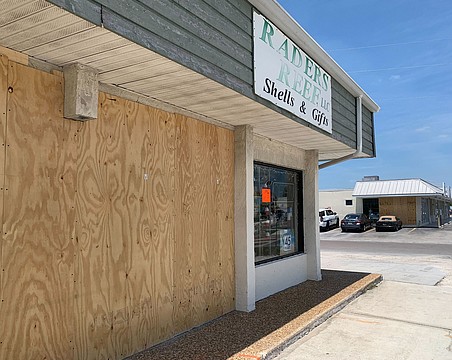REVIEW SUMMARY
What. Lee County road impact fee method.
Issue. Consultant's method not consistent with county capital plan.
Impact. Millions of dollars in overcharges.
By the numbers. Click here for a table showing the effect of state road trips on the road impact fee.
When builders and developers in unincorporated Lee County, Fort Myers and Sanibel pay impact fees, the money is supposed to cover the cost of city and county roads needed for their projects. However, Lee County is collecting a portion of that impact fee — nearly 40% — for roads that it has no plans to spend money on.
That's because that portion of the road impact fee total is based on developers' consuming capacity of state roads and Interstate 75. Although the county's policy allows it to collect for state roads and the interstate, some question the legality of doing so if the county doesn't intend to spend money on them.
The inclusion of state roads and the interstate into Lee County's impact fee calculations comes from the recommendation of its impact fee consultant, Texas-based Duncan Associates. The result adds up to millions of dollars in extra expense every year for developers. It also makes Lee County's impact fees among the highest in the state.
For example, developers paying impact fees on a 100,000-square-foot industrial building would have paid an extra $248,700 on the project because of this one factor in the county's fee method.
“Unfortunately, those are the types of impacts that would keep us from attracting the kinds of businesses we need,” says Mitch Hutchcraft, vice president of real estate for Consolidated Citrus and chairman of the county's Local Planning Agency, which wants to cut impact fees by 63%.
The extra cost can be traced to the 46% of travel on the major road network within the county that happens on the interstate and state roads. That percentage is derived from travel data in an April study by Duncan Associates.
The firm's method for calculating the road fees uses a trip length that is 38% longer with state roads and I-75 included. Those longer trip lengths factor into a series of equations that produce the inflated fees.
County Commissioner Tammy Hall says she wasn't aware of how the state roads travel factored into the fee. She has company in Hutchcraft, other members on the Local Planning Agency, plus Michael Reitmann, executive vice president of the Lee Building Industry Association.
The county commission will consider cutting impact fees by an average of 27% at its June 14 meeting. However, that reduction, recommended by Duncan and supported by county staff, only relates to lower road and right-of-way costs and less traffic on the roads these days.
The county's Local Planning Agency agreed with a recommendation of the Horizon Council — the county's economic development body — to cut the fees an additional 50% for two years. That amounts to a roughly 63% reduction in the fees.
That 50% cut appears arbitrary to Hall, who prefers a quantitative approach. “Whether I go beyond the staff recommendation will depend on the logic behind it,” she says. However, the 63% cut proposed by the local planning agency nearly matches the 65% average decrease that would result from removing the travel on the state roads and I-75 plus the consultant's recommended reduction of about 27%.
Legal issue
The problem is that the county doesn't plan to spend what little impact fee money it's bringing in these days on state roads or I-75. One reason: Money is tight. Dave Loveland, the county's transportation director, says he expects only $2.5 million in impact fee revenues this year, down from $3.3 million last year. “The peak was about $45 million in 2006,” says Loveland. “That's a big, big change.”
During the 2009 and 2010 fiscal years, when the current fee method has been in place, the county collected a total of $10.35 million in road impact fees. That adds up to roughly $4.1 million in extra fees builders and developers paid.
Duncan consultant Clancy Mullen explains that the firm includes state roads in its impact fee formula because the county has a policy that allows it to spend impact fees on those roads.
But when Loveland was asked how much impact fee money is in the county's five-year transportation plan to be spent on I-75 or state roads, he answers: “zero.”
And that presents a legal problem in the opinion of Deborah Martohue, an impact fee and land use attorney from St. Petersburg who has studied Duncan's methods. “That is fine as enabling legislation to allow state roads to be included as part of the impact fee calculation,” she says about the county's policy. “However, the capital improvement program must also then include improvements to state roads.”
Martohue argues that if a fee is based on including the construction costs of state roads and/or trip length, but the capital improvement program that implements expenditure of the fees does not include improvements to the state roads, then “the fee has no rational nexus to the improvements being charged for.”
One of the fundamental Florida case law requirements for impact fees is that there be a “rational nexus” between the amount of the fee and the benefit received by the fee payer.
Mullen notes: “They could choose to use a methodology to exclude state roads,” and adds that changing the method to do just that would be consistent with a policy not to spend impact fees on state roads. But that was not a topic of discussion when the consultants came before the Local Planning Agency last month or anytime before, for that matter.
The subject apparently hasn't come up for quite some time, if at all. Mullen says Duncan first did an update of the county's impact fees in 2000, and claims that the state roads were part of the previous method. Lee County first adopted road impact fees in 1985.
“We've never really discussed that trip length calculation at the Local Planning Agency level before,” says Ron Inge, a financial and real estate consultant with Inge and Associates and the longest serving member, who joined the board in 1993. “We assumed that was some standardized statistic and no one ever questioned how that was derived,” he adds. “Those were just taken as givens.”
Hutchcraft confirms Inge's recollection.
Big factor
That little known quirk in Duncan's method to include state roads largely accounts for Lee County's $8,976 road impact fee being the highest in the state for single-family homes and among the highest for other land uses, according mainly to the 2010 National Impact Fee Survey, compiled by Duncan Associates.
As of last fall, when Duncan took its survey, the average road impact fee in Florida for a single-family home of 2,000 square feet or three bedrooms stood at $3,601. That's 40% of the Lee County fee.
Since then, more local governments in the state reduced impact fees or suspended them for a year or more. Orange County joined the 20-county parade last month cutting most of its non-utility impact fees 25% and its school impact fee 50%. Its road fee dropped from $3,825 to $2,869.
While the extra trip length is costing a 100,000-square-foot industrial building nearly an extra $250,000, it's costing office developers more than that: $287,900 extra for a 100,000-square-foot office building.
For a new home buyer now paying the current $8,976 road impact fee, it's costing about an extra $3,600. That's nearly a quarter of the $15,310 tab that includes fees for roads, parks, fire and school facilities.
By reducing the trip length and adopting the 27% cut, the current cost could drop by 66% to about $2,476 per 1,000 square feet of office development.
Sarasota County also used the Duncan firm to increase its impact fees in 2007, using a nearly identical method. As part of a phase-in strategy, Sarasota County's road fee for a single-family home would have more than tripled to $8,512 by 2008 largely due to Duncan's method of using travel on state roads in the calculation. The county never fully implemented Duncan's method, and has now cut its fees.
As for Lee's fees, Inge says, “There was even discussion at the local planning agency to eliminate them entirely over two years. Staff had concern over that,” he notes, which led to the compromise.
“I think it is too little,” says Reitmann. “I think they should reduce it across the board. It's too late and too little.”
Inge hopes the county commission now has the ammo it needs to justify a lower fee that's more competitive with other counties in the state and the region.
“It gives them a rational basis to take a further reduction on the fee instead of worrying about the arbitrariness,” says Inge. “It gives them the justification they need.”






